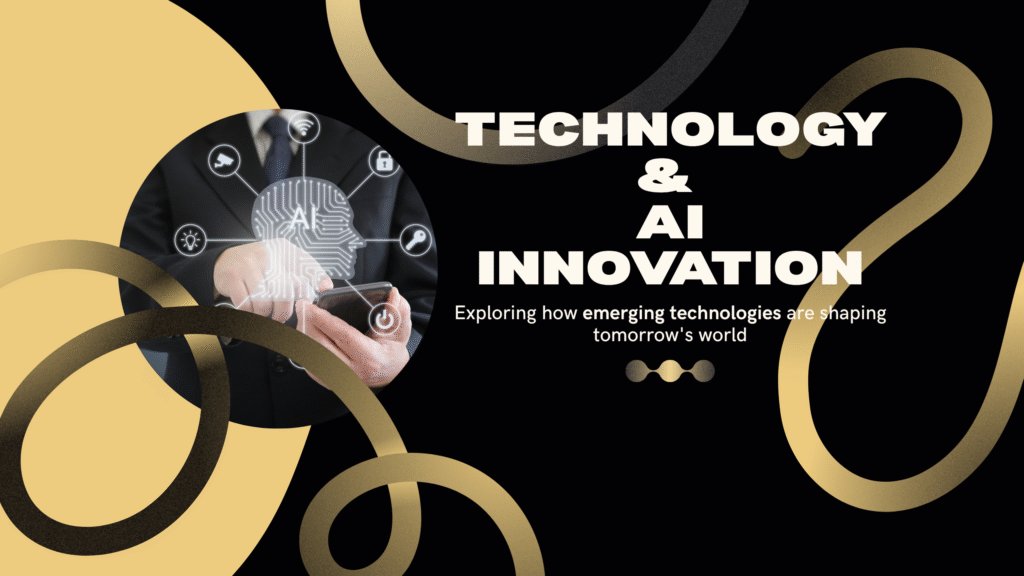
In recent years, the pace of technological development has accelerated faster than any period in modern history. At the core of this transformation is artificial intelligence (AI), machine learning (ML), and next-gen innovations like quantum computing and augmented reality (AR). These tools aren’t just revolutionizing the tech industry; they’re reshaping healthcare, manufacturing, city planning, logistics, education, and more.
The Rise of Artificial Intelligence and Machine Learning
Artificial intelligence has moved beyond niche applications. From recommendation engines on streaming platforms to language translation and fraud detection, AI is becoming a backbone technology.
According to Statista, global AI software revenue is expected to reach USD 126 billion by 2025, with countries like the United States, China, and India leading in adoption and investment.
Machine Learning: Powering Predictive Decision-Making
Machine learning, a subset of AI, helps systems learn from data patterns without explicit programming. Industries like finance and e-commerce rely on ML for predictive analytics, customer personalization, and operational automation.
For example, India’s digital lending sector leverages ML to evaluate creditworthiness in underbanked areas, improving loan approvals and reducing risk.
Quantum and Spatial Computing: Expanding What’s Possible
While traditional computing solves linear problems, quantum computing handles complex, multi-variable problems in seconds. In 2024, IBM unveiled a 1000-qubit quantum computer, setting the stage for major breakthroughs in drug discovery and encryption.
Spatial computing — a convergence of AR, VR, and IoT — enables machines to interact with the physical world. Use cases include:
- Virtual training simulations in aviation
- AR-assisted remote surgeries in healthcare
- Real-time factory visualization in manufacturing
Smart City Infrastructure and IoT
Urbanization is pushing cities to become more intelligent and responsive. Smart cities use IoT sensors, data analytics, and cloud platforms to monitor traffic, reduce energy consumption, and improve public safety.
Example: Singapore’s Smart Nation Project
Singapore is one of the most advanced smart cities globally. Its initiatives include:
- Smart traffic light systems
- Public safety sensors
- Digital identity for all citizens
According to McKinsey, smart city technologies could reduce urban greenhouse gas emissions by 15% and cut commute times by 20-30%.
Blockchain: Enabling Secure, Transparent Ecosystems
Blockchain isn’t just about cryptocurrency. It’s also powering supply chain transparency, secure voting systems, and intellectual property tracking.
In Estonia, blockchain is integrated into national health records, judicial systems, and even business registration processes. This has improved efficiency, reduced fraud, and built public trust.
Immersive Technologies: AR, VR, and XR
AR and VR are moving beyond gaming. In Germany, automakers like BMW use VR to design and test vehicles virtually before building prototypes. AR shopping experiences are also expanding in Europe and North America, helping consumers try products virtually.
The global AR/VR market is projected to reach USD 451 billion by 2030, with the U.S. and China as leading markets.
Global Impact: Which Countries Are Leading?
- United States: Home to leading AI firms (OpenAI, NVIDIA) and quantum labs (IBM, Google).
- China: Significant investment in AI startups and facial recognition tech. Plans to be global AI leader by 2030.
- India: Government-backed Digital India initiative fosters AI innovation in education, healthcare, and agriculture.
- Germany & Japan: Focused on industrial automation and robotics via spatial computing and smart factories.
Challenges to Consider
Despite these advances, challenges remain:
- Data privacy and ethics: AI algorithms can unintentionally reinforce bias.
- High implementation costs: Quantum and spatial computing require heavy R&D funding.
- Regulation: Governments are still drafting comprehensive AI policies to safeguard consumers.
Future Outlook: What to Expect in the Next 5 Years
- AI democratization: Low-code platforms will make AI accessible to SMEs.
- Mainstream quantum applications: Especially in logistics, finance, and genomics.
- AI + IoT convergence: Smart devices that self-optimize based on real-time feedback.
- Decentralized AI: Use of blockchain to train AI models securely without centralized control.
Conclusion
Technology is no longer just a support function; it is the foundation of economic growth and global development. With AI and emerging computing models at the helm, the coming decade promises smarter, more resilient systems across every sector.
Businesses and governments that invest early in AI and emerging tech will gain significant advantages — not just in efficiency, but in shaping the future of humanity. As innovation continues, the most important focus should be on ethical, inclusive, and sustainable tech adoption.





More Stories
Indian-Origin Techie Makes $34.5 Billion Bid for Google Chrome: PR Stunt or Disruptive Strategy?
Big Savings Alert: Google Pixel 9 Pro Price Cut on Flipkart
Cybersecurity & Data Protection in the Digital Age: A Global Perspective